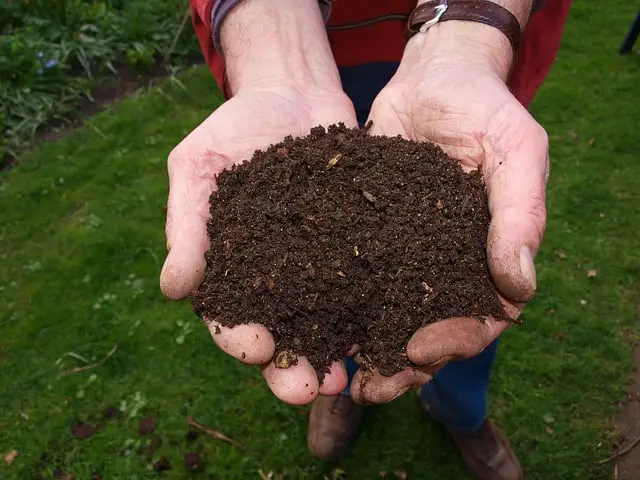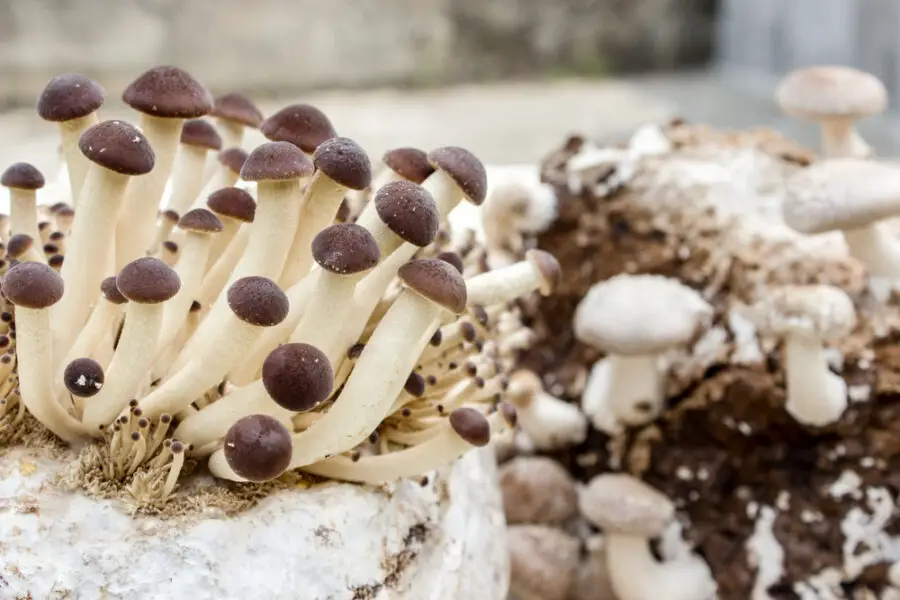The White Button Mushroom is the most common mushroom species we encounter at dinner tables today. This type of mushroom is commonly sold at supermarkets and has a very delicious taste. The white button mushroom is one of the most common mushrooms in nature and has the mildest flavor that goes with anything.
This mushroom has a very faint smell and can be consumed raw as well as cooked.
What Are The 5 Most Common Mushrooms For Eating?
1. White Button Mushrooms
Although the White Button Mushrooms are of medium size, their hat diameters vary between 4-6 cm.
These white mushrooms have smooth caps and a spongy body. When this mushroom starts to deteriorate, it will turn brown and lose its whiteness.
The gills are brown and the spores are dark brown. White Button Mushrooms, an edible type of ravioli, make up the majority of the mushroom varieties you see in supermarkets today.
2. Crimini Mushroom
Also called Baby Bellas, the Golden Italian Mushroom, and The Classic Brown, this mushroom species is the newest member of the portobello family.
Compared to other mushrooms Crimini has a more intense and dominant taste than most other mushrooms and is very appetizing.
It is getting easier to find these mushrooms, and they have recently attracted the attention of retailers. They are becoming more of a regular feature in supermarkets each year.
3. Shiitake Mushroom
Shiitake mushrooms are also known as Black Forest, Black Winter, and Golden Oak mushrooms. They are especially common across Japan.
Shiitake, which is almost a representative of Japanese culture, is even mentioned in literature and poems in Japanese history.
Known for their curved umbrella hat, these mushrooms have an earthy flavor. Dried shiitakes are more intense in taste than fresh ones.
4. Maitake Mushroom
Maitake Mushrooms, alternatively named Ram’s Head, Kumotake, and Dancing Mushroom is delicious and very popular in restaurants.
The cap of this mushroom resembles the head of a cabbage and droops slightly towards the body.
This type of mushroom, which you can usually find in forests, is very soft and hairy. Maitakes have a nutty flavor and a mild aroma. They leave a unique taste in the mouth.
This type of fungus is very common in Northwest America and Japan and grows in abundance in its natural habitat in eastern Mississippi.
5. Oyster Mushroom
The Oyster Mushroom, also known as a Tree Oyster, Angel’s Wings, and Abalone Mushroom, is one of the most common mushroom types of edible mushroom.
These mushrooms grow in the wild at the edges of wooded areas. Finding these mushrooms, which are very difficult to collect, requires great knowledge and skill.
The oyster mushrooms you see in stores are not wild. Supermarket Oysters are cultivated and mass-produced, they are white in color and their hats are rounded towards the body.
You can use Oyster mushrooms with many dishes. It can also be eaten as a snack with fried chicken and chips.
Are Wild Mushrooms Edible?
There are thousands of mushroom species in nature, and most of them are edible. However, the ones that are inedible are either highly poisonous, hallucinogenic or both. Mushroom hunters must be very careful to harvest only the safe edible species, which is more difficult than you would think.
Edible mushrooms do not contain toxins. If an edible mushroom does have some toxins in it, the amount is so minuscule it will not do harm, or be completely removed during the cooking process.
Poisonous mushrooms are generally darker shades of brown, purple, and black, and their hats are more wrinkled than non-poisonous mushrooms.
How Can I Tell If A Mushroom is Edible?
It is very difficult to understand at first glance whether a mushroom is edible or not. If you are a professional mushroom hunter, it may be easier to make this distinction because you know what kind of mushrooms grow in which region.
Some poisonous mushrooms are edible when cooked, while others can be deadly no matter how much you cook them. Before you eat a mushroom, you should find out whether that mushroom is safe or not.
Edible mushrooms usually peel more easily than those whose caps are not edible, which may be an indication. Also, if you come across a group of mushrooms that live on wood, these fungi are most likely safe.
But some exceptions exist. If a mushroom has white gills and annular bases, it probably belongs to a poisonous mushroom species. Also if other animals or bugs are avoiding the area then it may be because of the poison present.
Also, mushrooms with special features like spots, extra gills, unusual color or luminescence are indications that that mushroom is probably not safe to eat..
If you are not sure whether a mushroom is completely safe or not, never taste it. Otherwise, you may experience mushroom poisoning, which can be fatal if untreated.
Are Poisonous Mushrooms Deadly?
If poisonous mushrooms are consumed, they cause various serious illnesses that can develop into long-term diseases. If acute intervention is not performed, some poisonings can even cause death.
If you do not know whether a mushroom is poisonous or not, you should never approach it.
Touching a poisonous mushroom will not poison you, but just in case, you should wear plastic gloves when picking mushrooms that you do not know.
What Are The Symptoms Of Poisonous Mushrooms?
Vomiting and stomach cramps are the most common symptoms of mushroom poisoning. These symptoms are followed by severe headaches, weakness, and dizziness.
In acute poisoning, the victim can experience stomach bleeding, violent convulsions, and hallucinations.
If the poisoning is acute but the patient survives untreated, the poison in their system can contribute to the development of long-term health disorders.
The most common of these are lung inflammation and kidney failure. It is also known that these poisonings can cause devastating psychological disorders.
When such symptoms are observed, you should go to the nearest health institution and see a specialist doctor. Mushroom poisoning is very serious and carries a life-threatening risk.
Hi, I’m John Stephens, chief editor and writer for Totalgardener.com. I’ve been gardening and raising animals for over 15 years starting with a small backyard plot in Northern Virginia where I grew corn, potatoes, squash, and using a high mulch technique called the Ruth Stout Method. I also raised ducks and small mammals for meat and eggs in a movable pen similar to the ones used by Joel Salatin. I later moved to Colorado where I experimented with growing greens using aquaponics inside. I eventually added a microgreens setup and home sprouting operation. I’m excited to share everything I’ve learned plus more from the other local gardening and animal raising experts I know.



